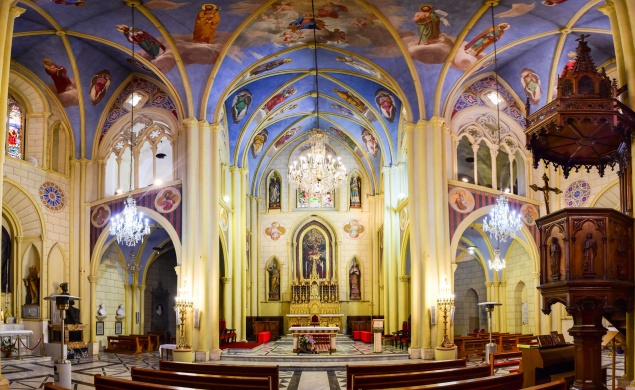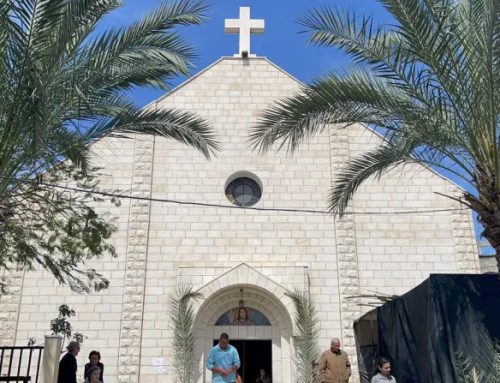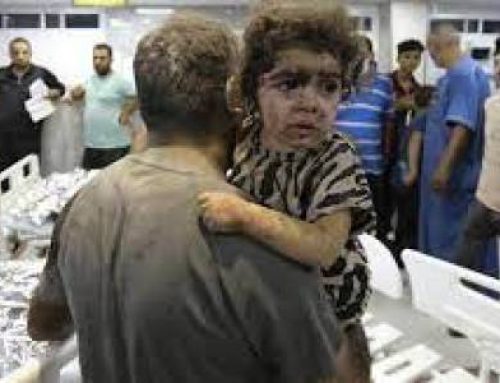JERUSALEM – It is a question that many pilgrims and visitors ask when they visit the Latin Patriarchate of Jerusalem and its Co-Cathedral of the Most Holy Name of Jesus. Why is it called a “Co”-Cathedral? What is its purpose? And what it is the difference between a co-cathedral and a cathedral?
The definition of a cathedral is a church in a diocese that has thecathedra[1] of the bishop and with time the place of his official celebrations.
In the Holy Land, the cathedral of the Latin Patriarchal Diocese of Jerusalem and the Latin Patriarch is the Basilica of the Holy Sepulchre, which is at the same time the cathedral of two other Patriarchs (Bishops) of Jerusalem; the Greek Orthodox and the Armenian.
A co-cathedral is a second church that also shares the location of the bishop’s “sede” (see). Building a co-cathedral was essential for a few reasons; one of them is the establishment of the Statu Quo by the Ottoman Empire in 1852, which governed the liturgical services at the Basilica of the Holy Sepulchre of the three churches making them adhere to specific times of celebrations. At the moment, the three communities share the use of two main sites in the basilica; the tomb of Jesus and the Crucifixion site on the Calvary.
The Basilica of the Holy Sepulchre is also viewed as one of the most important Holy Sites in Christianity and the basis for Christian faith and thus visited daily from morning till night by locals, pilgrims and tourists from around the world.
The construction of a second cathedral was then an answer for these bishops to hold ceremonies with liberty and convenience, benefiting from the proximity and space that these cathedrals provide.
In the case of the Latin Patriarchate of Jerusalem, which was reestablished in 1847, its new Patriarch at the time Joseph Valerga arrived in Jerusalem in 1848 and took up residence at the Franciscan Monastery of St. Savior, where the Custos received him among the Franciscan friars and provided him with a chapel that became his co-cathedral. In 1849, Patriarch Valerga went to Rome and expressed to Pope Pius IX his desire to be independent with his own residence, clergy, financial resources as well as a cathedral for his “sede”. After his request was approved in 1851, the Patriarch bought the land of the Patriarchate and the co-cathedral in 1855, but it was not until 1862 that the construction of the church started. After 10 years onFebruary 11, 1872, the Bishop of Jerusalem inaugurated the Co-Cathedral of the Most Holy Name of Jesus, just a few months before his passing.
Since then, the Co-Cathedral of the Latin Patriarchate had witnessed memorable events. On July 11, 1927, an earthquake hit the Holy Land and caused serious cracks in the walls of the building, which required immediate reinforcement to restore its stability.
The Arab-Israeli war of 1948-1949 was another event that affected the church, where nearby land mines shattered its glass-stained windows and damaged the roof tiles and ceiling paintings.
After the earthquake of 1927 and the war of 1948, restoration workswere underway to reinforce the church, but in the early stages of the work other diocesan needs were prioritized, and the co-cathedral could not be properly renovated until 1986. Restoration works lasted for two years after which the church was blessed on January 1, 1988, on the day of Solemnity of Mary, Mother of God.
On February 11, 2020, the Co-Cathedral of the Most Holy Name of Jesus celebrated its 148th anniversary of its construction. Since its establishment, it became the seat for 10 Latin Bishops of Jerusalem,two of whom were Custodes of the Holy Land. It was also visited by four Popes; Paul VI in 1964, John Paul II in 2000, Benedict XVI in 2009 and Francis in May 2014.
By: Saher Kawas
Source: LPJ






